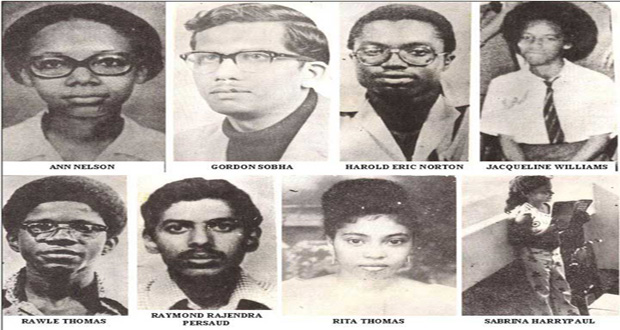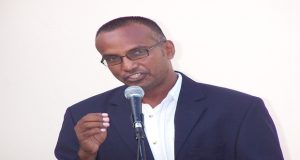39 years on … Memory of Air Cubana disaster still fresh as ever
ALMOST two decades after a terrorist bomb exploded on Cubana Airline Flight 455, causing it to crash into the sea off the coast of St. James, Barbados killing eleven Guyanese amongst 73 passengers, the Guyana-Cuba Solidarity Movement (GCSM) along with other entities will be observing the 39th anniversary today.On October 6, 1976 when the aircraft exploded just after take-off from Barbados, there were 57 Cubans, 11 Guyanese and five North Koreans on board.
Members of the Cuban national youth fencing team were among the dead, as were a number of young Guyanese academic scholarship winners who were travelling to Cuba to pursue studies in medicine.
The names of the 11 Guyanese are Margaret Bradshaw, Sabrina Harripaul, Seshnarine Kumar, Ann Nelson, Harold Norton, Raymond Persaud, Gordon Sobha, Rawle Thomas, Rita Thomas, Violet Thomas and Jacqueline Williams.
TERRORIST ATTACK
President of the GCSM, Haleem Khan, in an interview with this publication, said Guyanese should not look at the bombing as just a mere air disaster, but as a terrorist attack.
He explained that the “War on Terror” of the U.S. and Canadian governments is so disingenuous that they shelter and reward the terrorists they prefer, while accusing others of the crimes they commit.
Khan repeated his calls for the perpetrators to be brought to justice, while denouncing the actions of successive US Presidents in allowing those responsible for the bombing to walk the streets of Miami freely.
Investigations revealed that two types of bombs were used, variously described as dynamite or C-4.
Evidence implicated several CIA-linked anti-Castro Cuban exiles, and members of the Venezuelan secret police, DISIP.
Political complications quickly arose when Cuba accused the US government of being an accomplice in the attack. CIA documents released in 2005 indicate that the Agency “had concrete advance intelligence, as early as June 1976, on plans by Cuban exile terrorist groups to bomb a Cubana airliner.”
Former CIA operative Posada Carriles denied involvement, but provides many details of the incident in his book “Caminos del Guerrero (Way of the Warrior)”. The bombing was considered then the deadliest terrorist airline attack in the Western Hemisphere.
Four men were arrested in connection with the bombing, and a trial was held in Venezuela. Freddy Lugo and HernÁn Ricardo Lozano were sentenced to 20-year prison terms; Orlando Bosch was acquitted because of technical defects in the prosecution’s evidence, and lived in Miami, Florida until he died on April 27, 2011; and Luis Posada Carriles was held for eight years while awaiting a final sentence, but eventually fled. He later entered the United States, where he was held on charges of entering the country illegally, but released on April 19, 2007.
‘CUBAN FIVE’
Khan explained that at its simplest, the mastermind of the tragedy walks freely in Miami, while those who sought to expose the terrorist actions of groups that targeted Cuba, from the safe haven of the United States, were put behind bars. Those convicted are referred to as the Cuban Five.
At the Tribunal, testimony was heard from legal counsel and expert witnesses on the historical and political context, the arrests, trials and convictions of the Cuban Five, and events since the trial in Florida that resulted in the convictions.
According to Khan, on September 12, 1998, a heavily-armed FBI SWAT team arrested the members of the Cuban intelligence network in Miami. The five agents were tried, convicted and sentenced to long prison terms, including one double life sentence, plus 15 years.
Gerardo HernÁndez, Antonio Guerrero, RamÓn Labañino, Fernando GonzÁlez, and RenÉ GonzÁlez were convicted in Miami of conspiracy to commit espionage, conspiracy to commit murder, acting as an agent of a foreign government, and other illegal activities in the United States.
RenÉ GonzÁlez was released on October 7, 2011 following the completion of 13 years of his sentence with a further three years of probation in the US. He was allowed to return to Cuba for his father’s funeral on 22 April 2013, and a federal judge allowed him to stay there provided that he renounce his United States citizenship.
Fernando GonzÁlez was released from Safford Federal Prison on February 27, 2014, after serving his entire sentence. He was deported to Cuba. Over 350 committees have been established in the United States and around the world, demanding immediate freedom of the Cuban Five.
By Rabindra Rooplall


